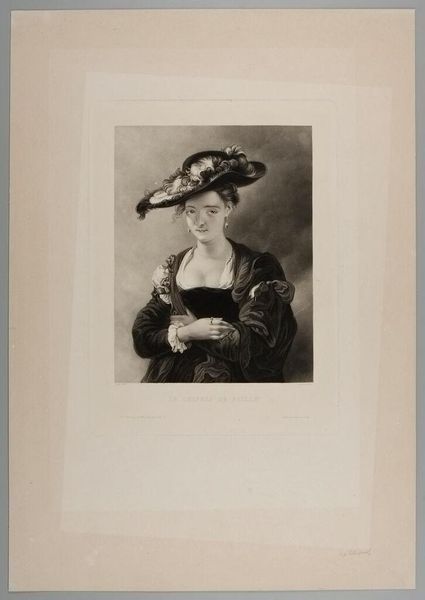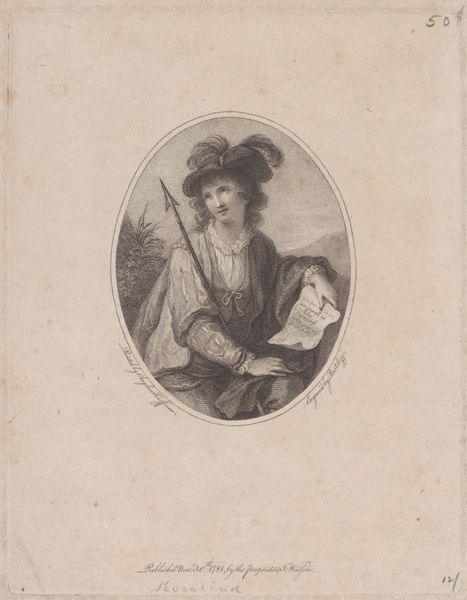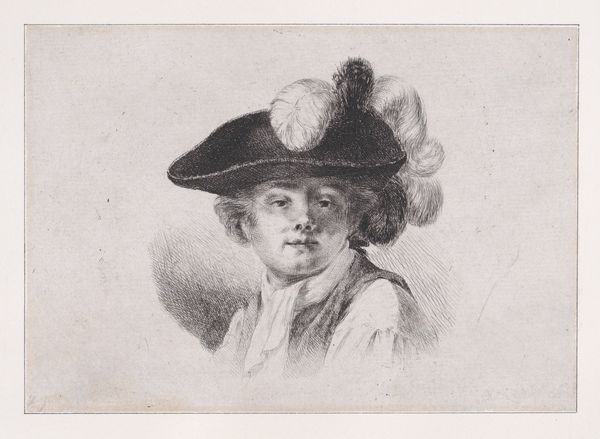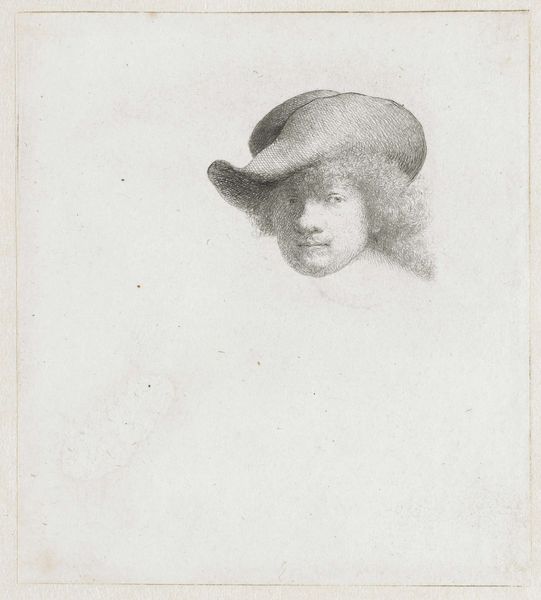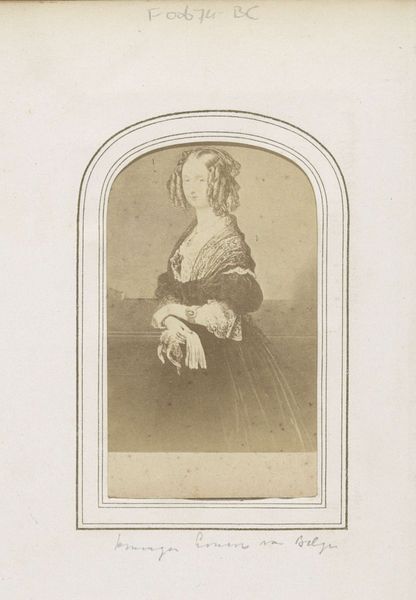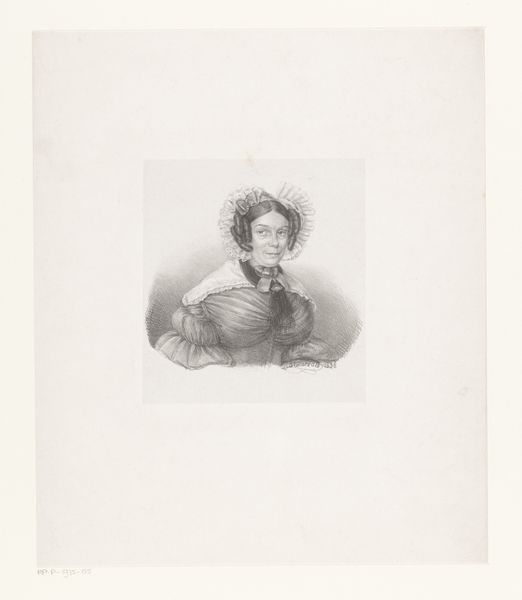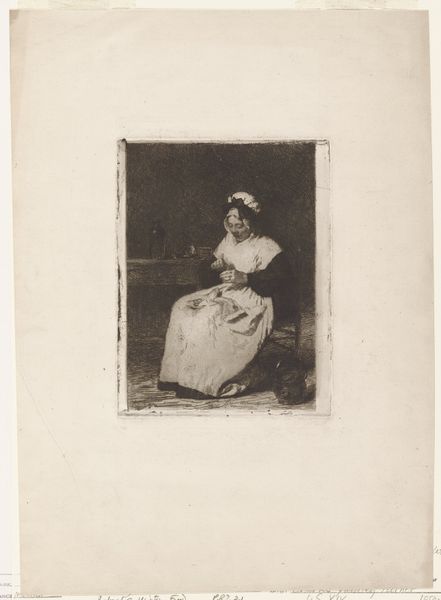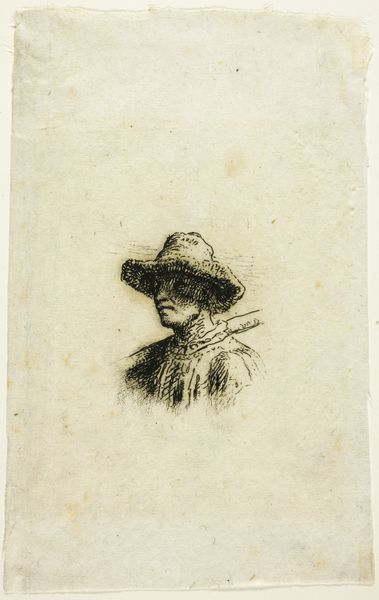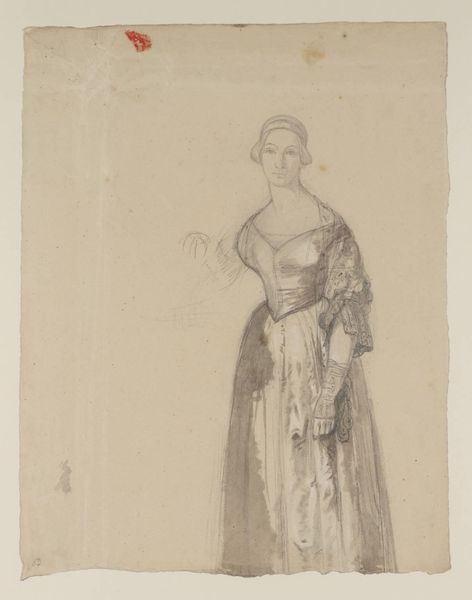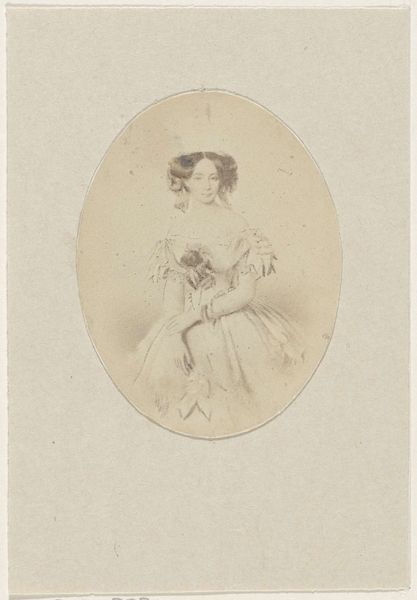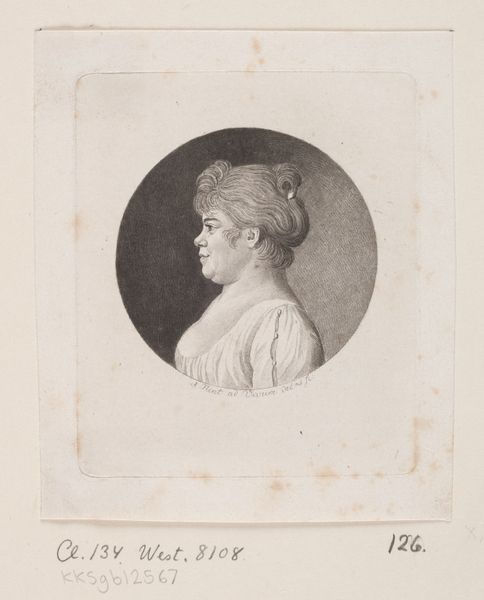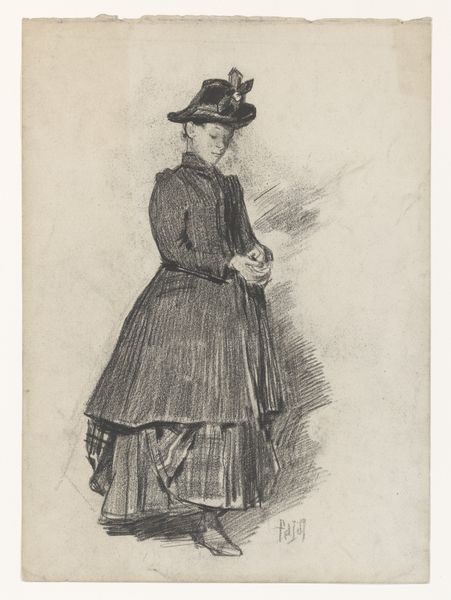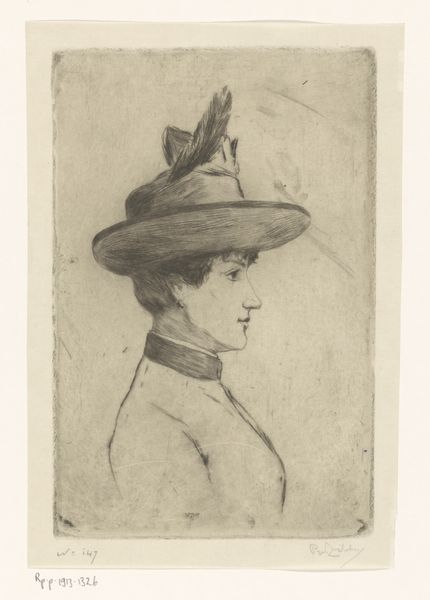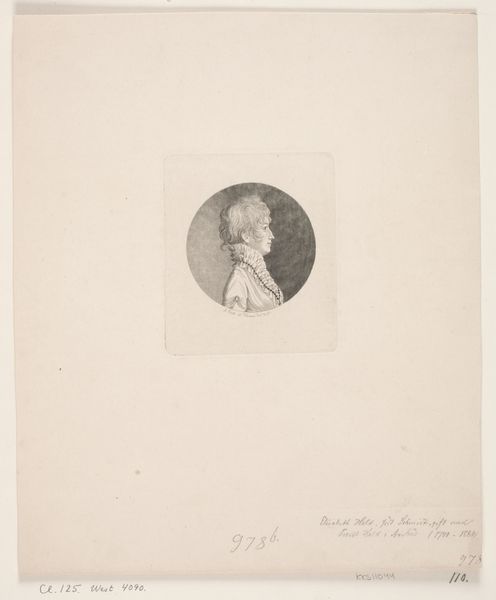
Portret van een vrouw, vermoedelijk de echtgenote van de kunstenaar 1829 - 1894
0:00
0:00
drawing, pencil
#
portrait
#
pencil drawn
#
drawing
#
charcoal drawing
#
figuration
#
pencil drawing
#
pencil
#
academic-art
Dimensions: height 268 mm, width 315 mm
Copyright: Rijks Museum: Open Domain
Editor: Here we have Gerrit Postma's "Portrait of a Woman, Presumably the Artist's Wife," dating from 1829 to 1894. It's a pencil drawing, quite delicate and seems almost like a preliminary sketch. What strikes me is how the medium itself contributes to the intimacy of the image. What do you see in this piece? Curator: For me, the intrigue lies in the drawing's materiality. It is not merely a representation, but evidence of labor. Consider the social context: Who was Postma creating this for? Was it commissioned, or was it a personal project rooted in domestic life and spousal devotion? Editor: That's interesting. The domestic aspect hadn't occurred to me so directly. Are you saying that the simple medium reveals more about labor and class dynamics? Curator: Precisely. The very accessibility of pencil and paper, versus say, oil paints and canvas, hints at the artist's possible social standing and the economies of artistic production at that time. We can imagine the physical act, the repetitive movements required to create the tonality and the effect it has. Who gets depicted in pencil, who in oil? Editor: So, by focusing on the material and process, we’re uncovering potential implications about production, consumption, and access in the art world during that period? Curator: Exactly. And we’re moving beyond simply appreciating the image for its aesthetic value to considering the larger societal forces at play in its creation and its very existence. Editor: I hadn't thought about portraiture in this light before. It opens up so many avenues for questioning beyond just who is depicted and what they represent. Curator: Indeed, examining the material conditions provides invaluable insights into the lives, labor, and cultural values of the time.
Comments
No comments
Be the first to comment and join the conversation on the ultimate creative platform.
